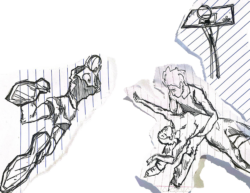As the attention spans of Americans continue to decrease, Major League Baseball finds itself in a tough situation. America’s pastime hasn’t changed its game in over a hundred years, and it’s not in any rush to cater to the multitasking-obsessed population by altering its regulations. Hockey changed its rules to increase scoring after the 2004-2005 lockout, and the NBA has frowned upon defense and essentially ignored the travelling violation for the better part of 20 years, but the MLB hasn’t budged.
With a game averaging three hours, America’s oldest sport could struggle to stay relevant in the 21st century. There aren’t many people who want to do anything for three straight hours, much less spend $100 to bake under the hot summer sun or sit inside all day watching on TV when your friends are at the beach.
As a die-hard baseball fan, nothing would be worse than seeing Bud Selig change the rules of the game in order to accommodate more home runs and quicker finishes. It pains me to hear people say that baseball is boring. I’ll admit it’s not the most fast-paced, action-packed sport, but those who don’t appreciate it are usually the ones who don’t give it a chance. They are the same fans who need to see football players deliver crushing blows, or basketball players soar into the air and deliver highlight reel dunks to justify the price of admission. Don’t get me wrong—I love seeing Blake Griffin demolish the rim on a 25-foot alley-oop. Baseball not only gives fans these great plays, but also engages fans mentally more than any sport. Each pitch, swing, and base running decision makes you think. It’s a chess match, but the pieces move and can hit a baseball 450 feet.
Major League Baseball has been forced to get creative and find ways off the field to make the experience better for the fans. Ironically, a sport invented in the 19th century is a technological innovator in the sports world. MLB.com can’t change the sport it’s promoting, but it finds the newest technology trends to dress up the old game.
MLB’s website has been credited as one of the best for sports online. You can find any random stat you want in the archives. They also control each team’s site through MLB.com Advanced Media and simplify the process of buying tickets, finding information about the team, and watching highlights. The introduction of MLB.TV, a subscription-based product that allows fans to stream any game online, gives displaced fans easy access to their favorite teams.
Another recent innovation, MLB-At Bat, is perhaps their most powerful. Now in its third year, MLB-At Bat allows you to stream any game on a mobile device. It has truly been a game changer for the sport, at least in a business sense. It is the top grossing app in Apple’s App Store. Die-hards never have to miss a pitch, and casual fans can watch an inning or two on the bus. Most importantly, it caters to younger fans, the same generation with an attention span of a three-month-old puppy. A 16-year-old may not be willing to sit in a stadium for three hours, but they’ll look at their phone (and any app that can distract them) 100 times in that timespan.
That’s why bringing the game to them was the best thing the league could’ve done. The MLB is finding the perfect balance between its old-time image and its new technology feel. If it can continue to do this, it may be one of the only sports to engage a new generation of fans while staying true to its roots.
Their latest initiative has shown that they bring the game to the fans, by bringing fans to the game—literally. As a marketing ploy to reach the younger generation, MLB has created the FanCave—a West Village storefront turned baseball fan’s dream pad where two baseball loyalists will watch all 2,430 games played this season, giving new meaning to the fan experience. If they won’t watch, force them to watch.




